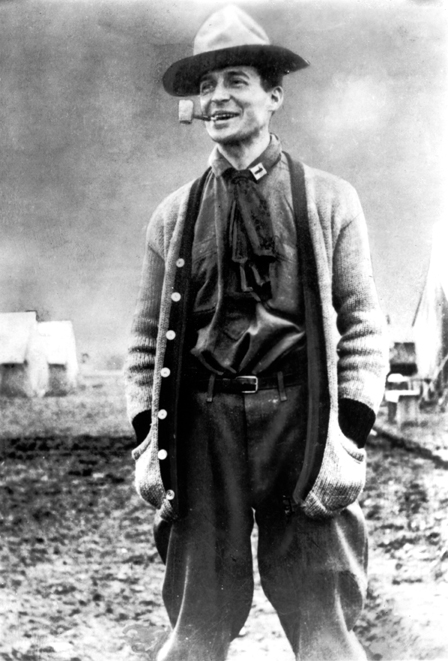| |
 |
| |
With his mother, 1900 |
| |
 |
| |
ca. 1900-03 |
| |
 |
| |
1916 |
In 1944, in the midst of his campaigns against the forces of Japan, Douglas MacArthur characterized the conflict in the Southwest Pacific as “distinctly an Engineer’s war.” The general knew more than a little about military engineering—he began his Army career as an engineer.
Graduating at the top of his class at West Point in 1903 entitled MacArthur to a commission in the Army’s elite Corps of Engineers. The lieutenant’s first assignment was with the 3d Battalion of Engineers in the Philippines. Other duties in the land for which he developed a lifelong attachment included surveying various camps and over-seeing the construction of wharves, sea walls, and roads.
Returning stateside in 1904, MacArthur was sent to San Francisco. Among his responsibilities there was service on the Corps’ California Debris Commission. In 1905 he became acting chief engineer of the Pacific Division. The commander of the division was his distinguished father, General Arthur MacArthur, who secured for his son an appointment as his aide-de-camp. The pair embarked on an extended tour of the Far East.
In 1906 MacArthur graduated from the Engineer School of Application at Washington Barracks and briefly served as aide-de-camp to President Theodore Roosevelt. Next he had charge of river and harbor improvements along Lake Michigan. From 1908 to 1912 the young officer (promoted to captain in 1911) was stationed at Fort Leavenworth, Kansas, where he again served with the 3d Battalion of Engineers, taught in the Army Service Schools, and published a manual entitled Military Demolitions. During this period he also instructed troops at the Mounted Service School at Fort Riley, Kansas, and participated in exercises with the Maneuver Division at San Antonio, Texas.
MacArthur’s intellect and ability drew praise from his superiors. Some, however, noted disturbing tendencies—verging on insubordination—to balk at unwelcome duties and to seek special privileges.
MacArthur received a choice assignment in 1913 as a member of the General Staff in Washington. There he also served as superintendent of the State, War, and Navy Building. In 1914 he faced danger as an officer in the Army’s Vera Cruz Expedition, the result of mounting tension between the United States and Mexico.
Participation in real hostilities came with America’s entry into World War I. In peacetime, service in the Corps of Engineers offered a desirable career path, but the ambitious Major MacArthur knew that in wartime command of troops offered the best road to rapid promotion and honors. Accordingly, he secured a commission as a colonel of infantry in 1917.
There followed a spectacular and often controversial rise to prominence in three wars that made General of the Armies MacArthur the most visible and decorated soldier in America. Congress added to his laurels when, in an act of 1943, it designated a lock being built on the Saint Mary’s River in Michigan as “MacArthur Lock.” His retirement in 1951 closed out a career that began almost fifty years earlier when MacArthur was a promising officer of the U.S. Army Corps of Engineers.

MacArthur's Corps of Engineers Castle Insignia
* * *
May 2009